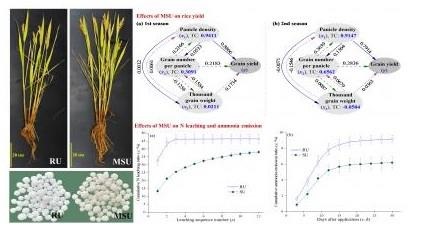
Compared with regular urea (RU), the matrix-based slow-release urea (MSU) reduced N leaching and ammonia emission, and thus improved rice growth and increased rice yield.
The applied nitrogen in crop production is easily lost through ammonia emission and nitrogen leaching. Therefore, many attempts have been made on the development of novel slow-release fertilizers to reduce nitrogen loss and improve crop production.
A research team led by Prof. WU Yuejin from the Institute of Intelligent Machines of the Hefei Institutes of Physical Science developed a novel matrix-based slow-release urea (MSU) recently to improve nitrogen use efficiency in rice production, and they assessed the performances of it.
"MSU is a promising fertilizer for rice production," said WU, "as less nitrogen loss and greater soil nitrogen availability can improve rice growth traits and physiological parameters in MSU."
Click here to see more...